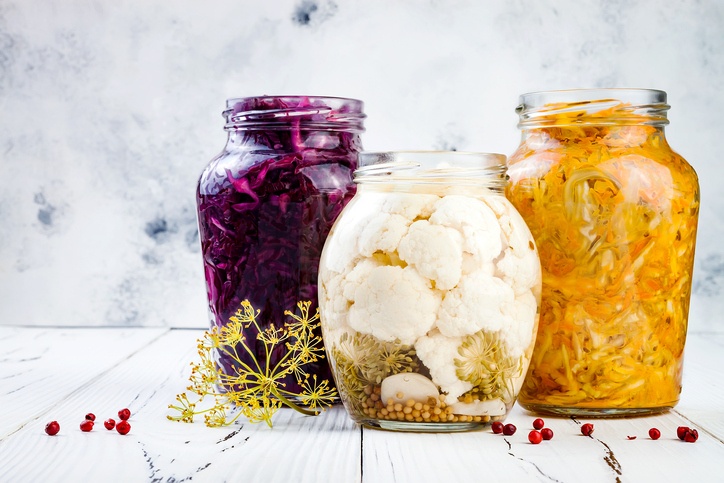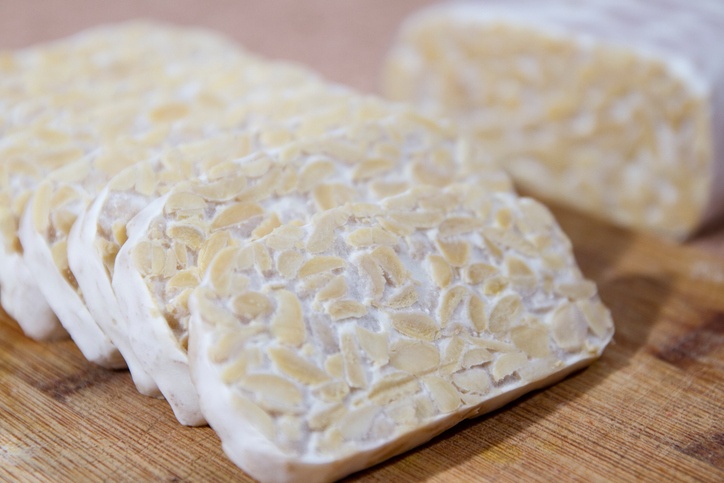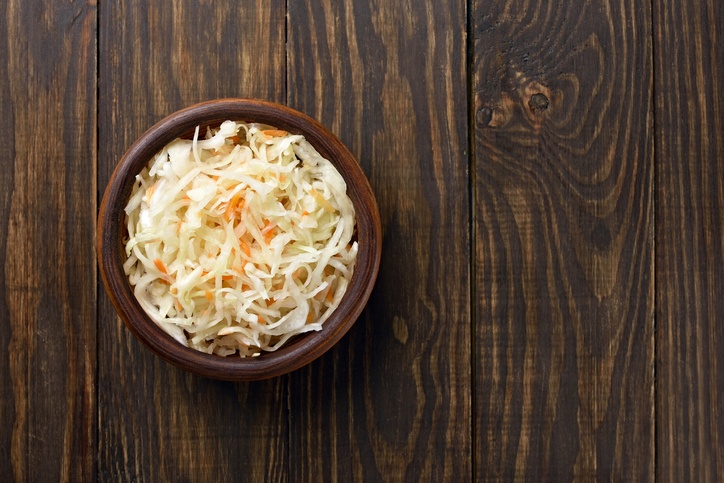Subscribe to our newsletter
Receive news and benefits on health and wellness.

The Nutritional Expert at SHA Wellness Clinic, Lola García, shares the benefits of symbiotic foods!
One of the points of the SHA nutritional method that our guests are most interested in is that we highlight the importance of consuming fermented food, especially vegetables and garden produce that undergo natural fermentation, which are rich in lactic acid.
In this article we will tell you why it is so important to consume symbiotic food.
Firstly, what is symbiotic food? We are familiar with probiotics, seeing as they are being added to food increasingly more these days to enhance it and they are even used as treatment and as nutritional supplements in cases of diarrhea or after taking antibiotics. Probiotics are the intestinal microorganisms that help improve the health of the host. The combination of all these microorganisms is known as microbiome, which can weigh up to 2 kilos.
The word prebiotics might not be as well known, but it can be summed up as being fibre. Prebiotics are non-digestible carbohydrates, which act as food for probiotics.
The symbiotics are food items that combine the characteristics of the probiotics and the prebiotics, nourishing the microorganisms that benefit the host and establishing new colonies of microorganisms that are just as beneficial.
However, why is it important that these microfauna coexist in our body? The area of research related with the microbiome is continually growing. We are only studying the tip of the iceberg, but our small intestine is already considered to be our second brain, so keeping it in shape helps avoid suffering from depression, stress and other degenerative brain diseases. The microbiome has also been associated with the immune system. This is due to its connection with the lymphoid tissue and it is involved in a feedback loop process. This connection means that the appropriate gut flora protects us against incoming pathogens or from developing autoimmune diseases, such as rheumatoid arthritis, certain types of cancer and even coronary heart disease.
Looking after the microbiome is essential to enjoy a healthy and well-balanced life, which means unhealthy habits that negatively affect this balance must be avoided, such as a diet that is low in fibre, consuming excessive amounts of animal protein, refined, processed products that are full of chemicals, having a sedentary lifestyle, or stress and negative feelings.
A simple way of obtaining optimum gut flora is adding symbiotic food to your diet as:

Miso: it is a paste that is obtained from the bacterial fermentation of cooked soybeans and other grains. It is used to make the famous miso soup and it can also be used to ferment vegetables or tofu and even to make delicious sauces.

Tempeh: it is a block that is similar to tofu, although it is harder. It is obtained from the bacterial fermentation of soybeans or chickpeas. Good quality tempeh has a white velvety exterior and a mushroom-like aroma. It must be cooked before using it in recipes. This involves boiling it in water with soy sauce and a small piece of edible seaweed. It is the best substitute for meat and it stops meat cravings.

Sauerkraut: this is fermented cabbage with salt and juniper berries. Always buy the organic and unpasteurized variety. It is sold in certain health food shops or failing that, you can make it yourself at home. If you do, make sure you wash the cabbage first and cut it into very thin strips, put it in a large bowl and add raw sea salt (15 g per kilo of cabbage). Kneed it in thoroughly until the cabbage starts to release the moisture. Leave the cabbage in this bowl for a few hours, cover it with a cloth and wait for it to release more moisture and the aerobic fermentation starts. After that put the cabbage and the liquid together with a few juniper berries in jars with a hermetic seal, make sure that the cabbage stays under the liquid. Keep the jars in a dark, cool place and consume it after about four weeks. Two soup spoons of this delicious dish can be eaten daily; it can be used as a condiment in salads or as a garnish with other dishes or even as an appetizer.
Receive news and benefits on health and wellness.
